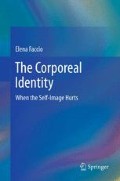Abstract
What are we talking about when we mention “the body”? Some people might think this question does not require an answer. Our experiences of the body are so common and spontaneous that we might think it unnecessary to explain it or limit it by defining it. Nevertheless – should we attempt to do so – we might be faced with a truly difficult task. What is the body? Is it “an experience” (of the body, of course) or a “vehicle for experience”? Is it “object” or “subject”? And if so, of what? Is it “energy mass” or “matter”? Is it a “biological device”?
The history of bodies offers its readers a journey, the advantages of a minor interest story in addition. The body explains and gives substance to a long story. To this long detailed story full of ideas, attitudes, institutions, of economic rules even, is given a body, a substance.
Jacques Le Goff, The Medieval Body
Access this chapter
Tax calculation will be finalised at checkout
Purchases are for personal use only
References
Barthes, R. (1998). Scritti, società, testo, comunicazione. Torino: Einaudi.
Berhoz, A. (1997). Le sens du mouvement [trad. it. Il senso del movimento, MacGraw-Hill, Milano, 1998]. Paris: Odile Jacob.
Csodars, T. J. (2002). Body, meaning, healing. New York: Palgrave Macmillan.
De Caro, M., & Maffettone, S. (2000, dic). Cosa dobbiamo intendere come persona. Ragioni del corpo, ragioni della mente. Iride, n° 31.
Dodds, E. R. (1951). The Greeks and the irrational [trad. it. I greci e l’irrazionale, La nuova Italia, Firenze, 1959]. Los Angeles: University of California Press.
Faccio, E., & Salvini, A. (2002). Le metossiamfetamine: l’ecstasy e le altre empatogene. In A. Salvini, I. Testoni & A. Zamperini (a cura di), Droghe: tossicofilie e tossicodipendenza (pp. 250–274). Torino: Utet
Foucault, M. (1976). Storia della sessualità vol.1 (La volontà del sapere), vol. 2 (L’uso dei piaceri), vol. 3 (La cura di sé) [trad. it. 1978]. Milano: Feltrinelli.
Galimberti, U. (1979). Psichiatria fenomenologica. Milano: Feltrinelli.
Galimberti, U. (1983). Il corpo. Milano: Feltrinelli. 2003.
Gamelli, I. (2005). Sensibili al corpo. Roma: Meltemi.
Gil, J. (1978). Corpo (pp. 1096–1168). Torino: Einaudi, Enciclopedia.
Gill, J. (1978). Corpo (pp. 1096–1168). Torino: Einaudi, Enciclopedia.
Le Breton, D. (2000). La sociologie du corps. Paris: Presses Universitaires de France.
Mattalucci-Ylmaz. (2003).
Mauss, M. (1934). Les techniques du corps. Journal de psychologie, XXXII, n°3–4, 1936; poi Sociologie et anthropologie, Puf, Paris 1950, rist. 2001 [trad. it. Teoria generale della magia e altri saggi. Einaudi, Torino, 1965].
Moravia, S. (1986). L’enigma della mente. Roma/Bari: Laterza.
Moravia, S. (2001). Il “mind-body problem” e l’interpretazione persono-logico-esistenziale dell’uomo. In F. Cambi (a cura di), La questione del soggetto tra filosofia e scienze umane. Firenze: le Monnier.
Mugnaini, F., & Clemente, F. (2000). Il corpo dell’atleta tra la gara e la festa. In P. Grimaldi (Ed.), Il corpo e la festa (pp. 173–190). Meltemi.
Salucci, M. (1997). Mente-corpo. Firenze: la Nuova Italia.
Salvini, A. (2004, settembre–ottobre). L’esperienza della trance. Psicologia contemporanea, 185, 42–48.
Sarsini, D. (2003). Il corpo in Occidente – Pratiche pedagogiche. Milano: Carocci ed.
Searle, J. (1987). Mente, cervello, intelligenza. Milano: Bompiani.
Varela, F., Thompson, E., & Rosch, E. (1991). The embodied mind, cognitive science and human experience [trad. it. La via di mezzo della conoscenza, Le scienze cognitive alla prova dell’espe-rienza Feltrinelli, Milano, 1992]. Cambridge, MA: MIT Press.
Author information
Authors and Affiliations
Rights and permissions
Copyright information
© 2013 Springer Science+Business Media New York
About this chapter
Cite this chapter
Faccio, E. (2013). Integrated Bodies. In: The Corporeal Identity. Springer, New York, NY. https://doi.org/10.1007/978-1-4614-5680-3_1
Download citation
DOI: https://doi.org/10.1007/978-1-4614-5680-3_1
Published:
Publisher Name: Springer, New York, NY
Print ISBN: 978-1-4614-5679-7
Online ISBN: 978-1-4614-5680-3
eBook Packages: Behavioral ScienceBehavioral Science and Psychology (R0)

